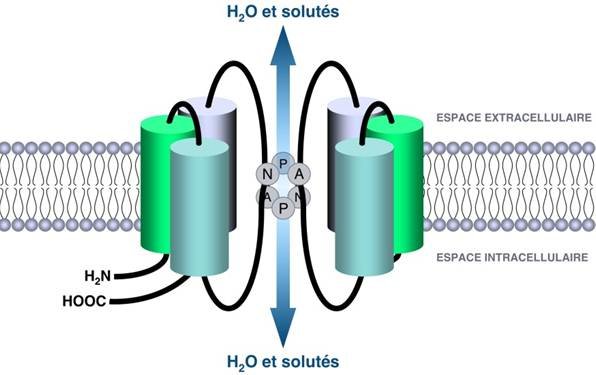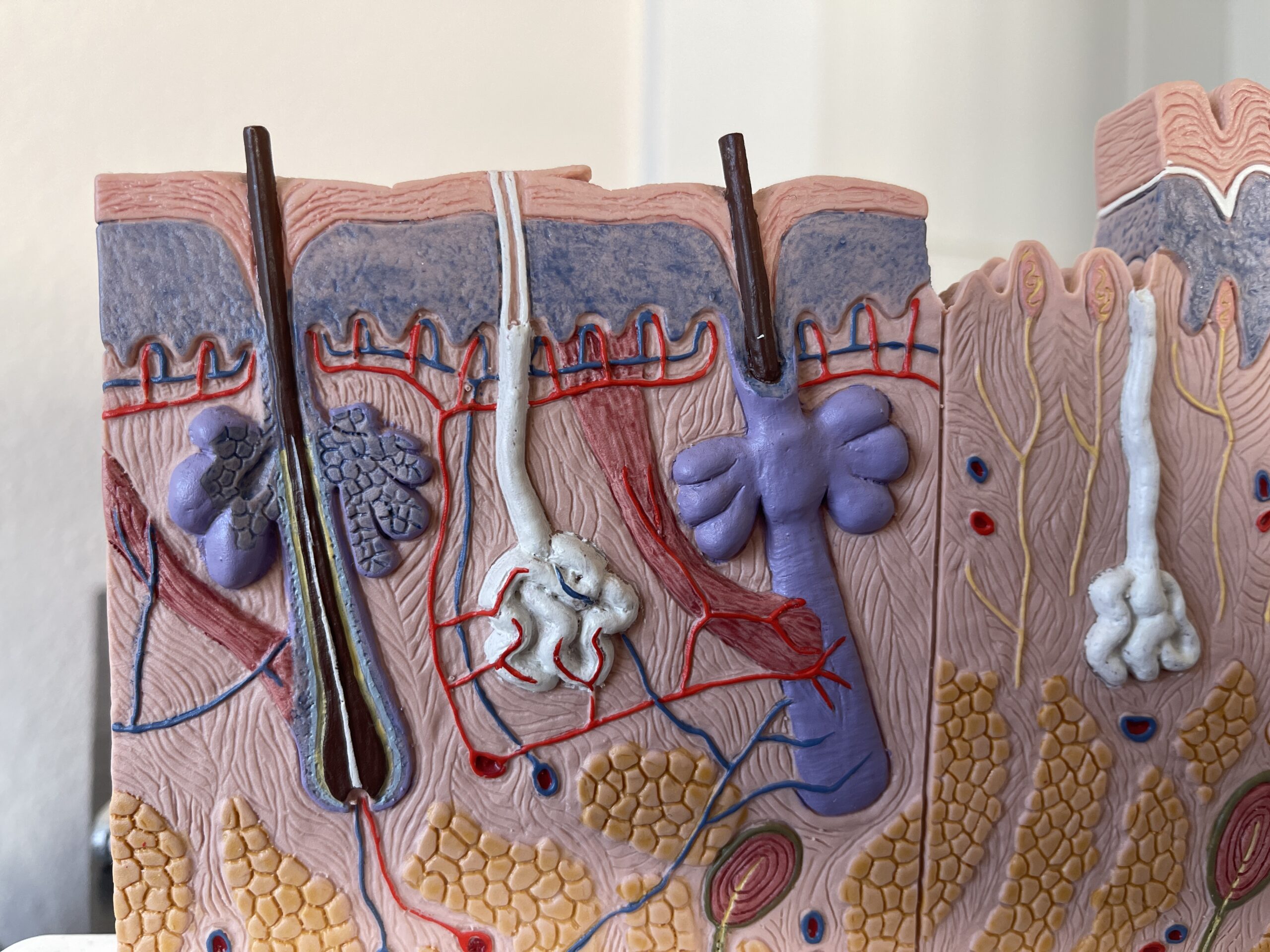ADVERTISEMENT INFO: SOME PRODUCTS MENTIONED IN THIS POST ARE PR (GIFTED) AND LINKS USED ARE AFFILIATE LINKS. I RECEIVED NO MONEY TO WRITE THE BLOGPOST. PLEASE READ DISCLAIMER
As soon as the weather gets colder, our skin starts to act up. It gets tight, itchy, looks flaky and dull and maybe even starts to break out more than you are used to. What if I told you that the underlying problem in all of these cases is most likely a change in the skins moisture content aka dehydrated skin?

I know, everyone and their grandma has been telling you to keep your skin hydrated, this is old news. But today I want us to look into what exactly changes in the skins molecular structure when it gets dehydrated, what causes this dehydration and how you can prevent it!
What is Skin Hydration, really?
Skin hydration refers to the process of reaching and maintaining adequate water levels within the skin. Around one third of that water is bound to structures often referred to as Natural Moisturizing Factors, the rest is present as free water content. This one third that is bound to the skins own structures actually has the bigger effect on proper skin function that the free water – keep that in mind for later when we discuss ways to deal with the dehydration.
Through a process called Transepidermal Water Loss (short: TEWL) we constantly lose some of the water from our skin to the environment. Note: this isn’t sweating where your sweat glands excrete liquid to regulate your body temperature, but an ongoing process where water gradually evaporates from the skin. How big that proportion is depends on different factors, some of them external, like the humidity levels in your environment, and some internal, like the integrity of your skin barrier.
If you remember the structure of the skin, you’ll remember that the outer layer, the epidermis, functions as protective barrier keeping irritants and harmful substances out and water in the skin. You have surely heard about it’s „brick and mortar“ structure, meaning the keratinocytes mature on their way up through the skin, lose their nucleus and turn into corneozytes that contain keratin filaments and are wrapped by a cornified envelope. Between these corneozytes are lipids, organized in lamellar lipid bilayers. Now if you imagine your skin cells as bricks and the lipids between them as the mortar—when the mortar dries out, the wall becomes weak.

What happens on a molecular level in dehydrated skin?
If the moisture content in the skin falls beneath its optimal level, it changes the molecular arrangement of the peptides in the keratin filaments inside the corneocytes, making them more rigid and weaker. Imagine the difference between a soft, well-hydrated sponge and a dry, brittle one—your skin cells act similarly. It also impairs the function of different enzymes in the skin responsible for cell maturation and desquamation. That means that the tight barrier of cells and lipids gets disrupted, causing more moisture to escape and making it easier for irritants to get in – a vicious cycle, as the increased TEWL further reduces moisture content in the skin – the dehydration gets worse because due to the dehydration the skin doesn’t function properly anymore.
Thankfully the skin has different mechanisms to react to that. The production of Natural Moisturizing Factors for example starts earlier if your environment is dry than it does in humid climates. There are also pores between the cells called Aquaporines that can be up or downregulated to balance the moisture levels inside the cell. But depending on your skin, your environment and your lifestyle habits that might not be enough to stop the vicious cycle. (More info: The benefits of Natural Moisturizing Factors in skincare explained)
On the other hand, too much moisture isn’t ideal either—it can cause the corneocytes to swell and allow the barrier to become more permeable, which we sometimes use to our advantage in skincare and for drug delivery. When you put on an occlusive layer – you occlude the skin with a patch or slugging – the Transepidermal Water Loss decreases and the skins moisture content goes up. Slugging is a method where you apply a thick occlusive layer (like petroleum jelly) over your moisturizer to lock in hydration. That leads to increased permeability, meaning things you put underneath that occlusive layer get absorbed more easily. These changes aren’t permanent though, once the occlusion is removed, the increased permeability leads to increased evaporation until the ideal state is reached again.

Dry Skin vs. Dehydrated Skin
Now how can you tell if you have dry or dehydrated skin? Both appear dull, often flaky, might feel tight or even itch, but need slightly different treatment.
Well, dry skin usually is a permanent skin type: The skin lacks oils and lipids, either since you were born because of your genetics or because you spend so many years on this planet already that your skin shows decreased oil production as sign of aging. You can also creat dry skin yourself by overwashing – think having your hands immersed in water for prolonged periods of time without protection – or the overuse of cleansers that strip the skin of its natural oils. Sure, your face feels squeaky clean, but your skin barrier is crying underneath.
Dehydrated skin is temporary and can happen in all skin types: dry, normal or oily. It is caused by an increased evaporation of water, so an increased Transepidermal Water Loss due to living in a hot or dry climate or due to an impaired skin barrier function, think eczema or, again, overuse of stripping cleansing products.
Dry skin is prone to dehydration because it has an impaired barrier function, but dehydration is also very common in those with oily skin as the cleansers marketed at this skin type are usually quite stripping.
And even though „Drink more water“ is something you will read everywhere, it won’t affect the hydration levels of your skin by much, assuming that you aren’t severly exsiccated. Good hydration of the body will make sure that blood flow to the skin is optimal, which is beneficial, but you won’t drink dehydration caused by a damaged skin barrier away. You will spend more time in the bathroom though – the body is very good at regulating water content. (More info: Can you drink your way to hydrated skin?)

Source: dermnetnz.org
How to Treat Dehydrated Skin Effectively
Now that we have established that dehydrated skin isn’t good for us, let’s talk about how we best address it. As always, prevention is best, so if you know that with the start of cold windy days and central heating your skin will act up, you better not wait until it does, but establish a few changes beforehand. I have learned that the hard way. As someone that struggled with acne and oily skin for most of my adult life, I always tried to avoid anything more than a gel and inevitably paid the price when my skin got worse and worse in winter. Here is what I try and do now:
- Reduce environmental stress: Protect your face with a scarf when you go out and consider using a humidifier to increase ambient humidity. Or maybe pack the family and spend the winter someplace else where it is warm – very effective, but sadly not possible for most of us.
- Look at your routine: Consider switching your cleanser to a less stripping version, so from gel to milk for example, and replace some of your potentially barrier disrupting actives like acids or retinoids with soothing and barrier repairing ingredients
- Help your skin help itself: Chose products that increase the Natural Moisturizing Factors in your skin – basically any moisturizer will – and switch to richer formulas that replenish lipids and oils to keep the barrier as good as possible. For Natural Moisturizing Factors look for ingredients like glycerin, urea, and amino acids on the label, and for barrier repair Ceramides, Squalane and Phospholipids are often recommended. (More info: The benefits of Ceramides in your skincare explained)
And if your skin is already acting up, focus on hydration and barrier repair at the expense of other actives – once your skin is back to normal, you can start focussing on well aging again. Maybe even try slugging to get things back on track if that is what you enjoy – I personally can’t stand the feeling of a thick occlusive layer on my skin for prologend periods of time, but you do you.
TL;DR
Keeping your skin hydrated is crucial for its health and appearance. Dehydrated skin occurs when the moisture content is too low, leading to dullness, sensitivity, and an impaired skin barrier due to changes on the molecular level. These molecular changes can contribute to more moisture loss, meaning the process fuels itself. Dehydration can occur in all skin types, even oily ones and is often caused by external factors we can influence – something to keep in mind now that the colder season is upon us.

Shop my favorite skincare here
Don’t forget to check out the Discount Code Page on top if you want to save some money on your next skincare purchase, or click here to let me build a personalized skincare routine for you.
If you want to get more involved and pick my next topics or see exclusive behind the scenes content, don’t forget you can head over here and become a YouTube Channel Member!


